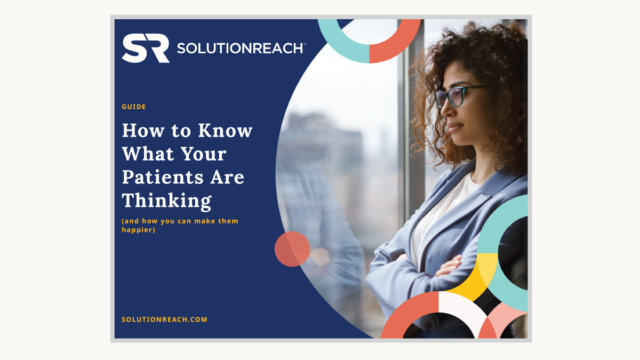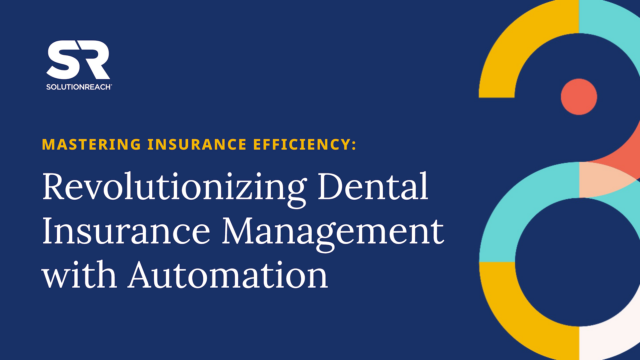It’s hard to know the level of care your healthcare practice is providing patients without consistently collecting feedback. And it’s just as important that your office management understands what your patients think of their overall care experience. Your ability to retain returning patients and attract new patients hinges (now more than ever) on patients’ opinions of the care journey. That’s why finding effective ways to retrieve patient feedback should be a priority for your practice.
The second point is that a high level of provider-patient communication is necessary for patients to be able to have a great care experience that’s reflected in their feedback. Your patients will be more likely to get an exceptional healthcare experience the better your communication is with them.
In this article, we’ll look at how simple and convenient provider-patient communication methods can pave the way for patients to have an optimal experience. We’ll also look at how post-appointment surveys can help you more accurately take the “satisfaction pulse” of recently seen patients. Patient surveys can give you valuable insights needed to make improvements to your workflow, upgrade the patient experience, and grow your retention and acquisition rates.
How can I communicate more effectively with patients across their healthcare journey?
Since a patient’s total care experience is made up of much more than just the actual appointment itself, it’s critical that you communicate clearly and effectively with patients to guide them through each step. The last thing you want is for patients to experience unpleasant surprises or hiccups. Even worse, miscommunication or a lack of communication signals to patients that giving them the best care experience possible isn’t a priority for your organization.
Every touchpoint your admin team has with patients is a golden opportunity to clearly convey what they should expect and/or what action they need to take on that care pathway. This makes it easy and convenient for them to advance through each step before and after care. Great communication also helps you avoid patient confusion and misunderstandings that can lead to a high volume of incoming phone calls. Ideally, patients should receive simple but effective text or email messages from your office at every point in the appointment workflow:
- Booking an appointment
- Recall notifications for routine maintenance or preventive visits
- Appointment reminders and confirmation requests
- Patient intake
- Post-visit care instructions or reminders to book follow-up visits
- Post-appointment patient satisfaction survey
- Payment reminders
- Online review invitations
- Patient education & marketing newsletters
Your consistent patient communication and engagement efforts also help ensure your patients receive a continuity of care, which leads to better overall health outcomes. Leveraging a variety of automated communication tools produces more seamless patient interaction, saves your office team more time, and helps effectively connect with every patient.
Why is collecting patient feedback important to your healthcare organization?
Patients are much more likely to respond to requests to share feedback when your practice takes a patient-centric approach to getting important information to them quickly, easily, and conveniently. Patient satisfaction surveys give you a data-driven way to measure the quality improvements of care and the overall experience each patient personally receives. This feedback can be invaluable to your practice management in identifying the following:
- Strengths and weaknesses
- Patient sentiment about the care and service they receive
- How likely patients are to recommend your practice to friends and family
- Insights into the quality of your customer service
- Feedback about their experience with healthcare providers and staff members
In 2023, consumer surveys typically get a 33% response rate across all industries, including in-person, mail, online, and email questionnaires. Though patient experience survey response rates can vary widely from 3% to 70%, most overwhelmingly prefer a short, post-appointment they can easily complete online within 24 to 48 hours of their appointment.
How can I make the best use of the survey results I collect?
1. Listen and act
Actively listen to patient feedback and take actionable steps to address their concerns and suggestions. Whether it’s about wait times, facility cleanliness, or customer service, show that you value your patients’ opinions by making improvements that will make patients want to return.
2. Enhance communication channels
The more options patients have to contact you to ask questions, reschedule, or hold an ongoing conversation, the easier you make it to share feedback and be responsive to their needs. This can include real-time, two-way texting, email, patient portal messaging, or on your practice’s social media platforms.
3. Training and development
Use patient feedback to identify areas where staff members might need more training or support. Continuous education and training programs can help healthcare professionals better meet their patients’ needs and expectations.
4. Focus on patient-centered care
Use feedback to adopt a patient-centered approach to how your practice operates. Tailor healthcare services, care plans, and interactions to align with patients’ preferences and needs, making them feel more valued and involved in their healthcare journey.
5. Recognize and acknowledge positive feedback
Highlight positive feedback within your organization to recognize team members who contribute positively to patient satisfaction. This encourages a culture of excellence in patient care and can help improve the morale of your office team.
6. Monitor trends and patterns
Analyze potentially negative feedback data over time to identify recurring themes or trends. This can help you understand overarching issues that may need systematic changes or process improvements.
7. Engage patients in decision-making
Involve patients in decision-making processes related to their own healthcare. Seeking their input not only makes patients feel empowered but also ensures their preferences are considered.
8. Transparency and follow-up
Openly communicate changes or improvements made as a result of patient feedback. This demonstrates transparency and shows patients that you value their opinions. Also, follow up with patients who provided feedback to show that their concerns are being taken seriously.
9. Benchmark and compare
Compare patient feedback against office benchmarks or industry standards to gauge your performance and identify areas where improvements are needed.
Key Takeaways
By actively soliciting, analyzing, and acting upon patient feedback, you can continuously enhance the patient journey, leading to improved patient satisfaction, better outcomes, and strengthened patient relationships. An automated patient survey solution can help you easily and efficiently gain insights on how you can enhance the patient experience and work toward positive gains in both patient retention and acquisition.

For more tips and best practices on how to measure patient satisfaction and collect valuable feedback to grow your practice, download the free guide, “How to Know What Your Patients Are Thinking.”
Read the Guide


